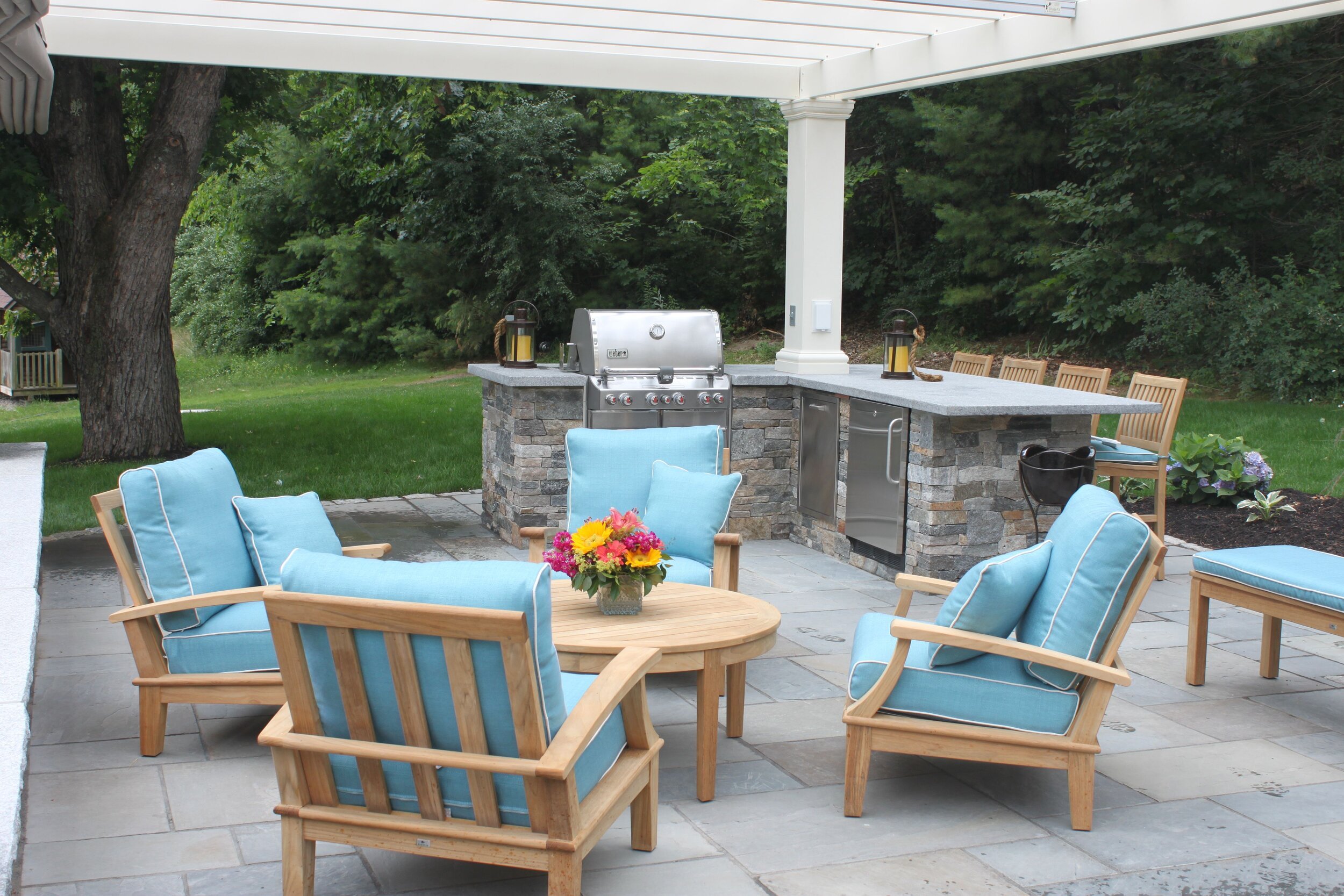How a Landscaper Can Protect Your Outdoor Kitchen from the Effects of Winter in Hollis, NH
Summer brings endless enjoyment of cooking and sharing meals with family and friends. But as much use as an outdoor kitchen sees during the height of the season, it is also subject to the effects of weather. To protect your investment, here’s how a landscaper can protect your outdoor kitchen from the effects of winter in Hollis, NH.
Related: LANDSCAPER'S TIPS FOR BUILDING AN IDEAL OUTDOOR KITCHEN FOR YOUR LEXINGTON, MA, PATIO
Let’s begin with the walls of your outdoor kitchen. Whether the facade has natural stone or concrete, it should be sealed periodically to prevent water infiltration that could cause damage due to the freeze-thaw cycle. While some wall products don’t require sealing, the New Hampshire winters aren’t exactly gentle, so an application of surface or penetrating sealant every 3-5 years will keep your kitchen’s facade looking like new. Surface sealants form a film that acts as a protective barrier against water and the elements. Keep in mind that surface sealants may darken the colors of your wall materials. Penetrating sealants chemically react with natural stone or concrete to form a hydrophobic barrier. For best results, use only sealants recommended by the manufacturer or your landscaper. Since solvent-based sealants are toxic, it’s best to have sealants applied by the pros.
One of the most effective ways to protect your outdoor kitchen is to install a pavilion or have your landscaper install a clear roof on an existing pergola. A clear or tinted pergola roof makes your outdoor kitchen usable even when it’s raining (or snowing, if you just can’t resist grilling in winter). Even if Mother Nature decides to shower you with rain for an entire month, or cover your landscape with snowstorm after snowstorm, your outdoor kitchen will be protected. If you don’t already have a pergola, consider a pavilion instead. This is essentially the same structure except with a solid roof that offers year-round protection from the elements.
Your landscaper can also cover all horizontal and vertical surfaces with tarps to really keep the elements out. It’s not the most attractive solution, but it will significantly extend the lives of your expensive appliances and countertops.
Here are other ways to winterize your outdoor kitchen:
1. All water lines to sinks, refrigerators, and ice makers must be shut off and drained thoroughly to prevent burst pipes.
2. Refrigerators and ice makers need to be unplugged; all food must be removed and the inside cleaned.
3. The sink needs to be cleaned out and covered securely to prevent debris from scratching the finish or entering the drain.
4. Stainless steel cabinets should be cleaned to remove any grease or debris stuck to the surface, and then they should be coated with stainless steel polish to provide an additional barrier against wind-borne debris. Wood cabinets must also be thoroughly cleaned and then oiled or sealed annually as well. Extreme temperature swings and the cold and damp of New Hampshire winters can quickly degrade wood. All sealing needs to take place when ambient air temperatures are above 50 degrees, so don’t delay in this step.
5. The grill should be cleaned thoroughly inside and out, and it should be seasoned prior to covering it. If it’s a gas grill, the gas should be turned off. If you use propane, disconnect the tank and store it indoors. Use only approved cleaners and apply grill polish to further protect the surface. For best results, cover the grill with a protective cover.
While outdoor kitchens are built to withstand the elements, they are not impervious to the effects of wind, snow, sleet, ice, and sub-zero temperatures.
Related: 5 OUTDOOR KITCHEN ISLAND DESIGNS TO CONSIDER FOR YOUR CONCORD, NH, LANDSCAPE

